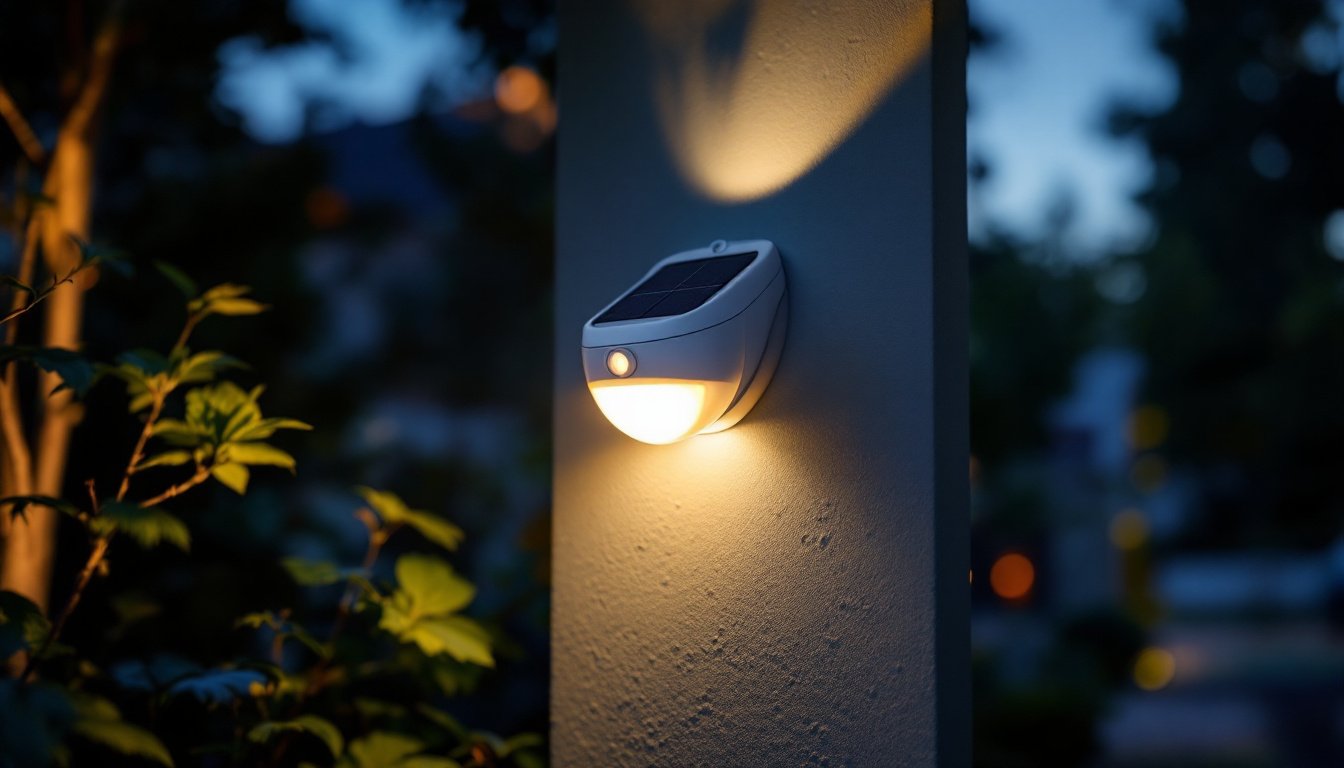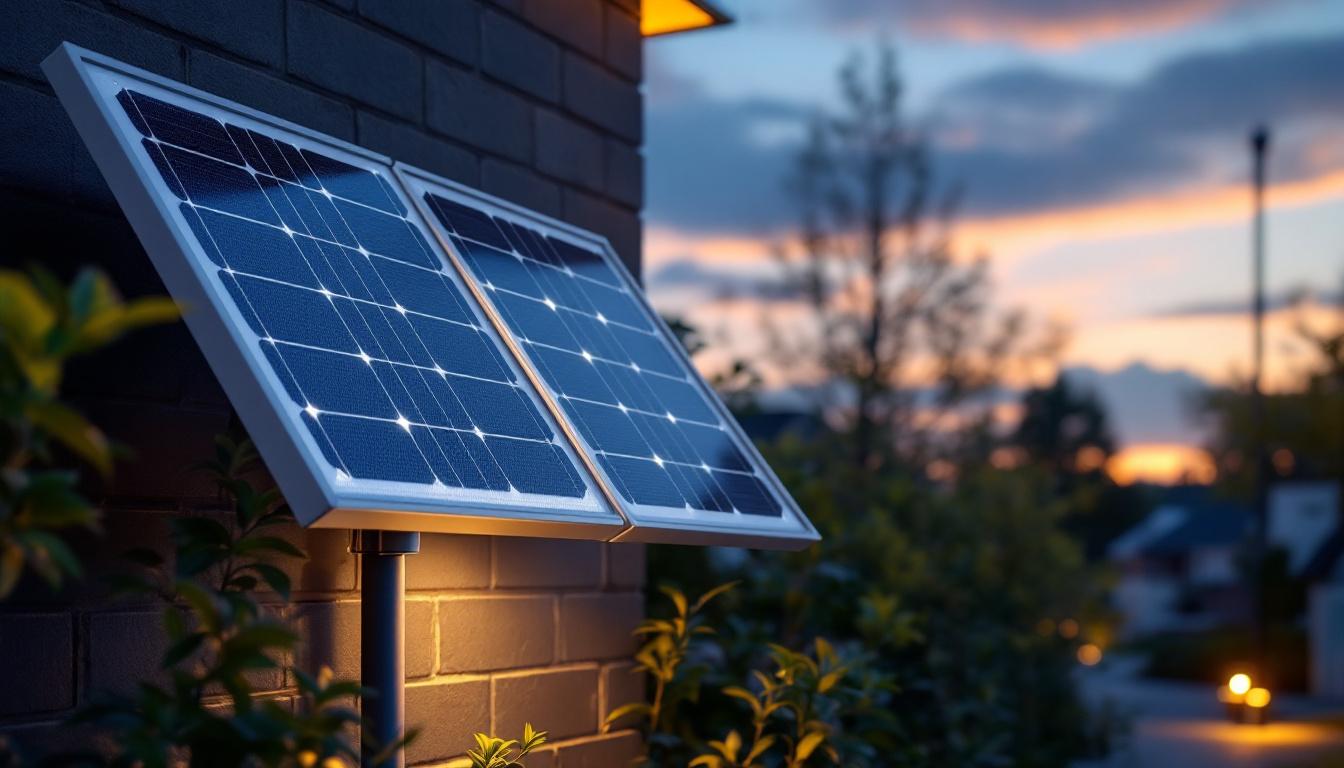
In recent years, the demand for energy-efficient lighting solutions has surged, prompting the rise of exterior solar motion detector lights. These innovative devices not only provide security and safety but also contribute to sustainability by harnessing solar energy. For lighting contractors, understanding the science behind these systems is essential for effective installation and customer satisfaction. This article delves into the mechanics, benefits, and considerations of solar motion detector lights, equipping contractors with the knowledge needed to excel in this growing market.
At the core of solar motion detector lights lies a combination of photovoltaic technology and motion sensing capabilities. Understanding these components is crucial for lighting contractors who aim to provide comprehensive solutions to their clients.
Solar motion detector lights are equipped with solar panels that convert sunlight into electricity. This process begins with the absorption of sunlight by the photovoltaic cells, which generates direct current (DC) electricity. The efficiency of these panels can vary based on factors such as the quality of materials used and the angle of sunlight exposure.
Once the solar panels generate electricity, it is stored in rechargeable batteries. These batteries power the light during the night or in low-light conditions, ensuring that the system operates effectively regardless of external light levels. For contractors, it’s important to consider the battery capacity, as it directly influences the duration and intensity of the light output.
Motion detection is a critical feature of solar motion detector lights. Most systems utilize passive infrared (PIR) sensors to detect movement. These sensors work by measuring changes in infrared radiation, which is emitted by warm bodies, such as humans and animals. When a warm body passes within the sensor’s range, the device activates the light, providing illumination only when needed.
Understanding the range and sensitivity settings of these sensors can help contractors better advise clients on optimal placement and usage. For instance, some lights offer adjustable sensitivity settings, allowing users to customize the responsiveness based on their specific environment.
Solar motion detector lights offer numerous advantages that make them an attractive option for both contractors and homeowners. These benefits extend beyond mere convenience, impacting energy consumption and safety.
One of the most significant advantages of solar motion detector lights is their energy efficiency. By utilizing solar power, these lights reduce reliance on traditional electricity sources, leading to lower energy bills and a smaller carbon footprint. For contractors, promoting the energy-saving aspect can be a strong selling point, especially for environmentally conscious clients.
Additionally, many solar lights operate with LED technology, which is known for its longevity and low energy consumption. This combination of solar power and LED technology results in a highly efficient lighting solution that can last for years with minimal maintenance.
Security is a primary concern for many homeowners, and solar motion detector lights play a crucial role in enhancing safety. The sudden illumination triggered by motion can deter potential intruders, making properties less appealing targets. Contractors can emphasize this benefit when discussing installation options with clients.
Furthermore, the ability to customize the sensitivity and range of motion detection allows homeowners to tailor the system to their specific needs. This adaptability can be particularly useful in areas with high foot traffic or wildlife, ensuring that the lights activate only when necessary.
Another appealing aspect of solar motion detector lights is their ease of installation. Unlike traditional lighting systems that require extensive wiring and electrical work, solar lights can often be installed without professional assistance. This feature not only saves time but also reduces installation costs for clients.
Moreover, solar lights typically require minimal maintenance. With no electrical components to worry about, the primary maintenance task involves cleaning the solar panels to ensure optimal performance. For contractors, this means fewer service calls and a more satisfied customer base.
While solar motion detector lights offer numerous benefits, there are several considerations that lighting contractors should keep in mind during installation. Understanding these factors can help ensure optimal performance and customer satisfaction.
The location of the solar motion detector light is critical to its performance. Contractors should assess the area to ensure that the solar panels receive adequate sunlight throughout the day. Shaded areas, such as those blocked by trees or buildings, can significantly reduce the efficiency of the solar panels, leading to insufficient battery charging.
When advising clients, it’s important to discuss the ideal placement for both the solar panel and the light fixture. A well-placed light can maximize exposure to sunlight while ensuring effective motion detection coverage.
Since these lights are designed for outdoor use, they must be weather-resistant and durable. Contractors should look for products that are rated for various weather conditions, including rain, snow, and extreme temperatures. This ensures longevity and consistent performance, even in challenging environments.
Additionally, understanding the materials used in the construction of the lights can help contractors choose high-quality products that will withstand the test of time. This knowledge can also be beneficial when discussing warranties and guarantees with clients.
The battery life of solar motion detector lights is another crucial consideration. Contractors should inform clients about the expected lifespan of the batteries and the importance of replacing them when necessary. While many systems come with rechargeable batteries, their longevity can be affected by factors such as temperature fluctuations and frequency of use.
Providing clients with guidance on battery maintenance and replacement can enhance their overall satisfaction with the product. Additionally, contractors can recommend systems that offer easily accessible battery compartments for hassle-free replacements.
Solar motion detector lights can be utilized in various settings, making them a versatile option for contractors. Understanding the different applications can help contractors tailor their offerings to meet the specific needs of their clients.
In residential settings, solar motion detector lights are often used for security purposes. Homeowners can install them near entry points, driveways, and pathways to enhance safety and visibility. The ability to activate only when motion is detected ensures that energy is conserved while providing necessary illumination.
Additionally, these lights can serve decorative purposes, enhancing the aesthetic appeal of outdoor spaces. Contractors can suggest different styles and designs that complement the homeowner’s landscape and architecture.
For commercial and industrial properties, solar motion detector lights can provide essential security measures. Parking lots, loading docks, and building perimeters can benefit from the added illumination, deterring unauthorized access and enhancing safety for employees and customers alike.
Contractors should consider the scale of the installation when working with commercial clients, as larger areas may require multiple units to ensure adequate coverage. Understanding the specific needs of the business can help contractors recommend the most effective solutions.
Solar motion detector lights are also increasingly used in public spaces, such as parks, playgrounds, and sidewalks. These installations enhance safety for pedestrians and create a welcoming atmosphere during nighttime hours. Contractors working on public projects should be aware of local regulations and standards regarding outdoor lighting.
Moreover, the use of solar lights in public spaces aligns with sustainability goals, showcasing a commitment to environmentally friendly practices. This aspect can be a compelling selling point when discussing projects with municipalities or community organizations.
The field of solar motion detector lighting is continually evolving, with advancements in technology and design paving the way for new possibilities. Staying informed about these trends can help contractors remain competitive and offer cutting-edge solutions to clients.
One of the most significant trends in outdoor lighting is the integration of smart technology. Many solar motion detector lights now come equipped with features such as mobile app connectivity, allowing users to monitor and control their lighting systems remotely. This capability enhances convenience and customization, making it an attractive option for tech-savvy clients.
Contractors should consider recommending products that offer smart features, as they can provide added value and differentiate their services in a competitive market.
As technology advances, energy storage solutions for solar motion detector lights are also improving. New battery technologies are emerging, offering longer lifespans and faster charging times. These advancements can enhance the overall performance of solar lights, making them more reliable for users.
Contractors should stay informed about the latest battery technologies and consider incorporating them into their recommendations to ensure clients receive the best possible products.
Design innovations in solar motion detector lights are also on the rise, with manufacturers focusing on aesthetics and functionality. Sleeker, more modern designs are being developed, allowing for seamless integration into various architectural styles. This trend caters to clients who prioritize both performance and visual appeal.
Contractors can benefit from familiarizing themselves with the latest design trends, enabling them to offer a diverse range of options that meet the unique preferences of their clients.
Exterior solar motion detector lights represent a significant advancement in outdoor lighting technology, combining energy efficiency, security, and convenience. For lighting contractors, understanding the science behind these systems is essential for successful installations and satisfied customers. By considering factors such as solar technology, motion detection, and installation best practices, contractors can effectively meet the needs of their clients.
As the demand for sustainable lighting solutions continues to grow, staying informed about industry trends and innovations will be crucial for contractors looking to thrive in this competitive market. By embracing the potential of solar motion detector lights, contractors can not only enhance their offerings but also contribute to a more sustainable future.
Ready to elevate your lighting installations with the latest in solar motion detector technology? At LumenWholesale, we provide lighting contractors like you with the highest quality, spec-grade lighting products at prices that can’t be beaten. Say goodbye to middleman markups and hello to our extensive selection that meets rigorous industry standards. With free shipping on bulk orders, you can stock up on reliable, high-performance lighting solutions that your clients will love. Don’t compromise on quality or value—choose LumenWholesale for the perfect blend of affordability and convenience. Wholesale Lighting at the Best Value is just a click away.

Discover innovative hacks and expert tips for smart lighting contractors to enhance outdoor lighting projects.

Discover the ultimate guide for lighting professionals with our essential checklist for solar panel flood lights.

Discover essential insights for lighting contractors on selecting and installing lights for recessed ceilings.

Explore the transformative journey of 4-foot shop lights and their impact on the lighting industry.